Artist Isabell Buenz works with secondhand material, creating paper sculptures, artists’ books, fashion items and upcycling vintage furniture and wooden items. She became interested in recycling and re-purposing objects from an early age, even making clothes for herself and her family. Isabell became a full-time artist in 2000 and creates her work in her home studio in Edinburgh.
IIn this interview with Isabell we talk about the influence of her father’s job at the local newspaper, the use of 100% renewable tea bag paper in her work and consider her unusual paper clothing.
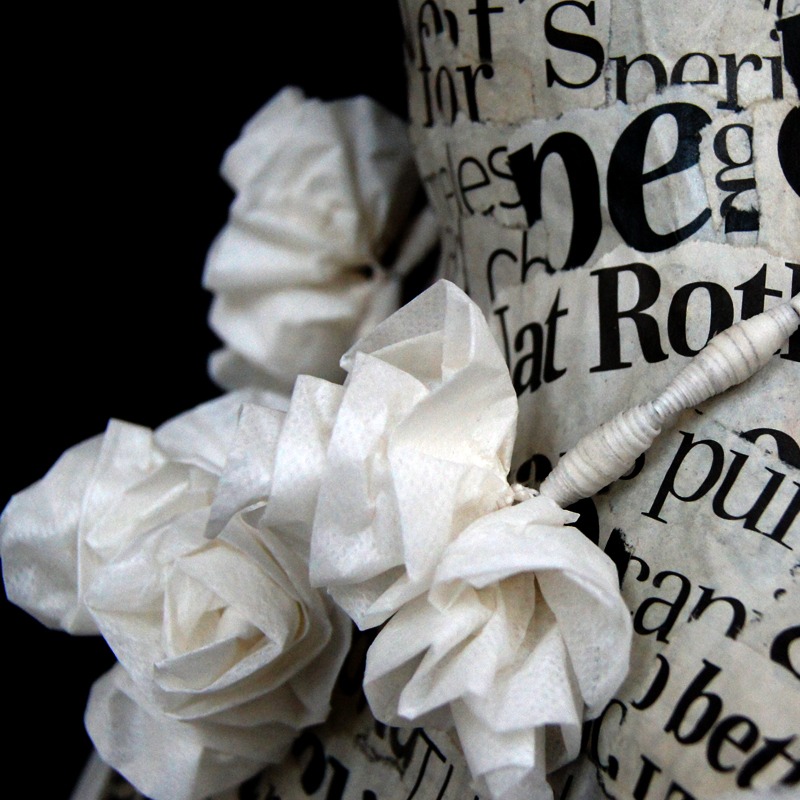
The freedom of fabric
TextileArtist.org: What initially captured your imagination about textile art?
Isabell Buenz: Nowadays textile art forms an important element of my work, however, my core work has always been creating things with paper. I started sewing as a child and still enjoy the freedom I experience in my work with fabrics. I find it interesting to compare working with textiles with the level of versatility and possibilities paper offers.
What or who were your early influences and how has your life/upbringing influenced your work?
My Dad’s work has always captured my imagination. When he worked for the local newspaper we always had big rolls of waste paper in the house. Early on I became fascinated with the idea of making all sorts of things from paper and discarded newspapers. I still have one of my first craft books: ‘Basteln mit Zeitungspapier’ which I bought in 1975!
I also started designing and making my own clothes after a school sewing project. It had never occurred to me before that you could make your own outfits. Initially, I made my clothes using my granny’s indestructible Singer sewing machine. When I was a teenager my parents finally bought our very own electrical machine. I started making my Mum’s evening dresses and showed her how to sew too.
What was your route to becoming an artist?
I wanted to be an artist since I was a teenager. I spent a lot of my time collecting my ideas, designing and making things. I was dreaming about having a gallery with a workshop where I could make and display my own and other people’s work.
However, I took very different career paths before setting out as a paper and book artist in 2000. At the time I was still working part-time for the NHS in Edinburgh which I finally left in the end of 2011.
I am now a full-time artist and mostly self-taught in the areas I work in, including book binding, textile work, paper art and photography. Over the years I have attended a variety of short courses that helped me increase specific skills and knowledge.
100% renewable tea bag paper
What is your chosen medium and what are your techniques?
I like working with any kind of paper but prefer to use discarded books, mulberry paper or tea bag paper.
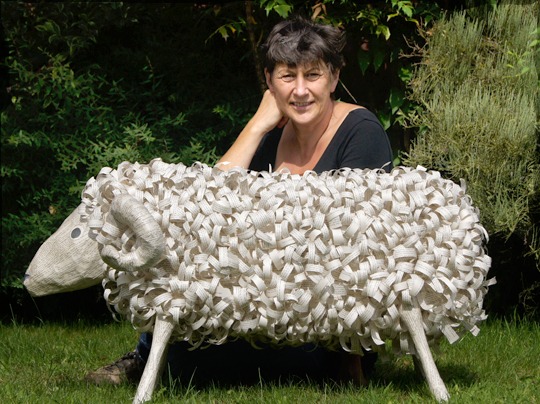
Over the last few years I have mostly worked with 100% renewable tea bag paper as my main medium, creating a collection of whimsical dresses, fashion accessories and shoes. My shoes are mainly made by papier-mâchéing over shoe moulds I make from clay. I aim to make them as thin as possible to allow the structure to show through in the light.
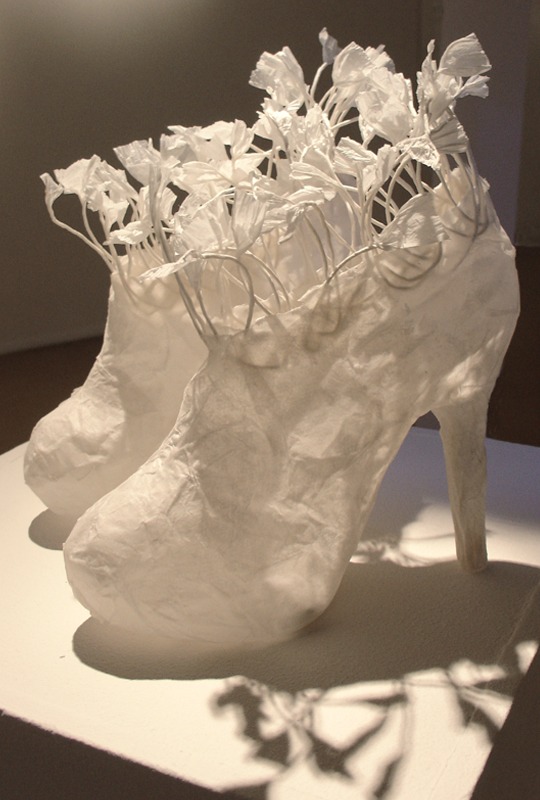
My paper dresses are made like ‘real’ dresses and the latest ones can actually be worn. I first create the patterns by draping and then finish the outfits by gluing or sewing, depending on the type of tea bag paper I work with.
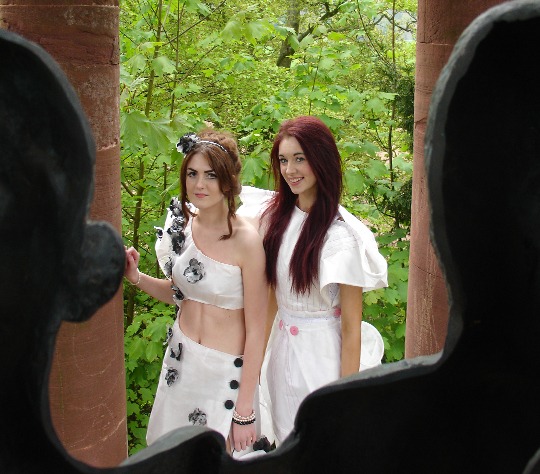
How would you describe your work and where do you think it fits within the sphere of contemporary art?
My work is a collection of whimsical paper fashion items. Many have a fairy tale quality and range in size from tiny matching dress and handbag ensembles to giant shoes. The work is often inspired by encounters with nature and my close-up plant photography.
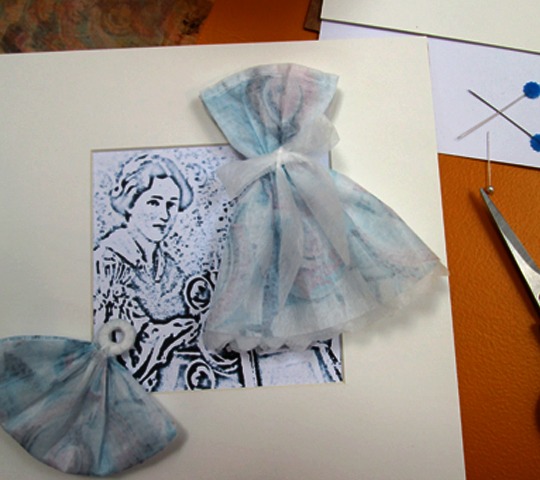
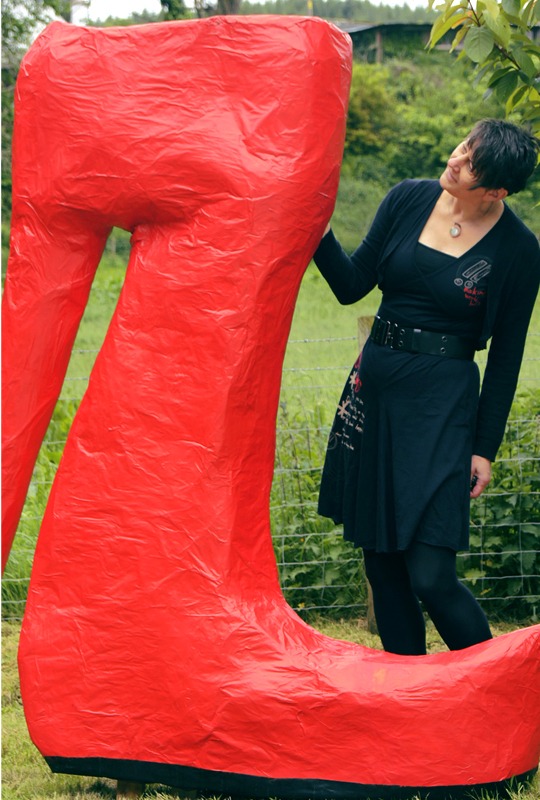
Tell us a bit about your process and what environment you like to work in?
I have an office/studio in my home in Leith, Edinburgh. I like the fact that I work with material that is often considered worthless, too delicate to handle and is frequently thrown away without thought. I have been interested in recycling and re-using things for unintended purposes from an early age.
That unfortunately means I’m a hoarder as anything could one day be useful in a very different form! I would love to work in a spacious, organised office and try to make space before every new project starts. By the end of the process I can usually count myself lucky if I can still get into the room and find a spot for my coffee cup!
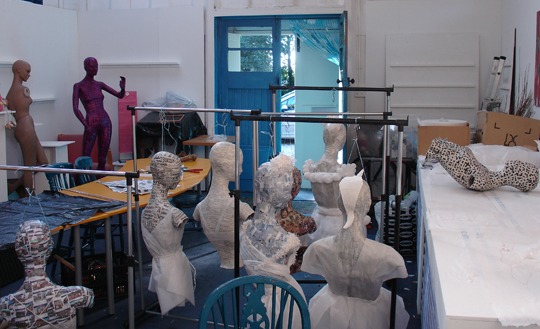
Ideas and interesting images
Do you use a sketchbook?
I rarely leave the house without a sketchbook and one of my cameras. Calling it a sketchbook, however, is probably misleading. I consider myself a complete amateur when it comes to sketching and drawing. A lot of the time my scribbles look like kid’s drawings (the only thing I seem to be able to draw a bit better are my fashion illustrations)… so the books are more like mood boards holding my ideas and interesting images. If I start a new project I usually make a new notebook for it.

What currently inspires you and which other artists do you admire and why?
I am very interested in the use of colour and patterns and love the clothing ranges of Spanish high street label Desigual. Mary Katrantzou and Kenzo are favourites of mine for their fashion and colour sense (even though most of my work is white!) and I love Iris van Herpen’s ethereal outfits.
I also love the work of fashion photographers Tim Walker, Nick Knight and Howard Schatz.
Tell us about a piece of work you have fond memories of and why?
One of my favourite occasions was my solo show ‘Transformation’ at the German Shoe Museum, Hauenstein. The director called me to commission the show after discovering my red giant stiletto online. He wanted one for his museum! I created the entire show from scratch. I worked with images of shoes that had special meaning or memories for their owners. I then created paper versions and transformational images on banners and took everything over to Germany by car. The giant stiletto travelled as a squashed chicken wire construction that I built and papier-mâchéd on site. The last bit dried an hour before the opening!
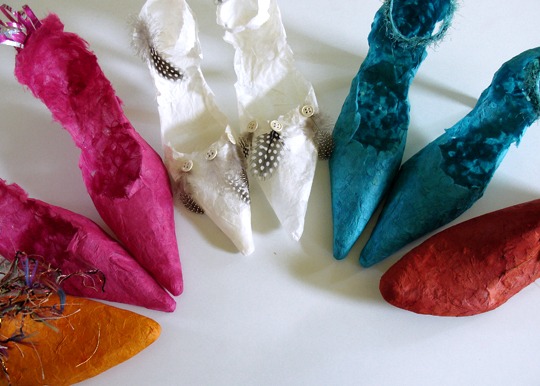
Unusual, wearable paper dresses
How has your work developed since you began and how do you see it evolving in the future?
I have become more confident in my work and my ideas and I think it shows in the results. I have moved on from my little shoes to creating unique, wearable paper dresses that I show as installations with a theatrical twist. They are also often used at catwalk shows and for advertising photoshoots, such as the Spring Fling Open Studio Event in 2015.

I would like to continue working along these lines and introduce other materials, such as fabric and screen prints into my work. I am hoping that I can develop a more relaxed style, improve my fashion illustration skills and expand my sewing skills.
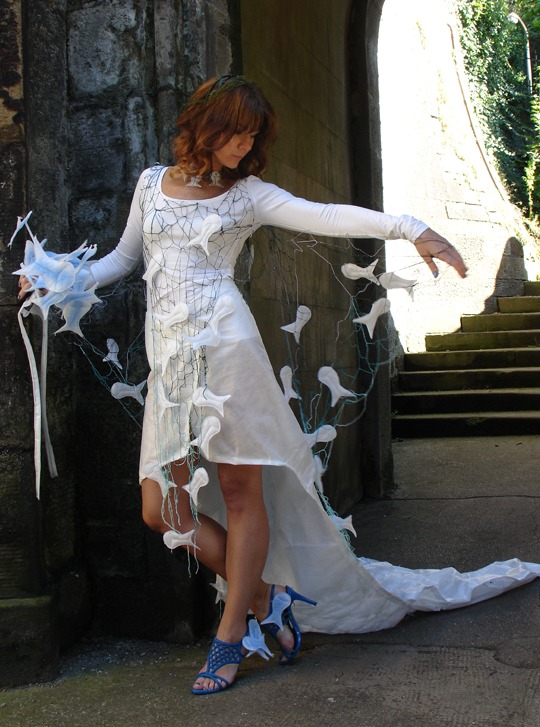
What advice would you give to an aspiring textile artist?
Be bold, go for it and don’t worry about what work other people create. Also, network… loads.
Can you recommend 3 or 4 books for textile artists?
[easyazon_link asin=”071367444X” locale=”UK” new_window=”default” nofollow=”default” tag=”wwwtextileart-21″ add_to_cart=”default” cloaking=”default” localization=”default” popups=”default”]Paper Textiles by Christina Leitner, A&C Black
[easyazon_link asin=”1861265786″ locale=”UK” new_window=”default” nofollow=”default” tag=”wwwtextileart-21″ add_to_cart=”default” cloaking=”default” localization=”default” popups=”default”]Textile Perspective in Mixed-Media Sculpture by Jac Scott, The Crowood Press
[easyazon_link asin=”0744557895″ locale=”UK” new_window=”default” nofollow=”default” tag=”wwwtextileart-21″ add_to_cart=”default” cloaking=”default” localization=”default” popups=”default”]Fairie-ality Style: A sourcebook of inspirations from nature AND Fairie-ality: the Ellwand Collection by David Ellwand, Walker Books [easyazon_link asin=”0744557895″ locale=”UK” new_window=”default” nofollow=”default” tag=”wwwtextileart-21″ add_to_cart=”default” cloaking=”default” localization=”default” popups=”default”]Fairie-ality Style: A sourcebook of inspirations from nature AND [easyazon_link asin=”074458065X” locale=”UK” new_window=”default” nofollow=”default” tag=”wwwtextileart-21″ add_to_cart=”default” cloaking=”default” localization=”default” popups=”default”]Fairie-ality: the Ellwand Collection by David Ellwand, Walker Books
[easyazon_link asin=”1592536093″ locale=”UK” new_window=”default” nofollow=”default” tag=”wwwtextileart-21″ add_to_cart=”default” cloaking=”default” localization=”default” popups=”default”]1000 Artisan Textiles: Contemporary fiber art, quilts, and wearables by Sandra Salamony & Gina M Brown, Quarry Books
Resources, equipment and exhibitions
What other resources do you use? Blogs, websites, magazines etc.
I am following a number of textile and fashion related sites online, including: Fashion and Textile Museum (London), Fashion Museum (Bath), Fashion For Good (Amsterdam), Fashion Observed, Paper Fashion Show (USA), World Of Wearable Art (New Zealand),
For opportunities, I mostly check out: Creative Edinburgh, Creative Scotland, and my network of contacts.
What piece of equipment or tool could you not live without?
Quite a few, I think:, a camera or phone, the current note/ sketch book, my box full of pens, markers, scalpels etc. My overlocker, my new sewing machine. And the old one… I mentioned I’m a hoarder, didn’t I?
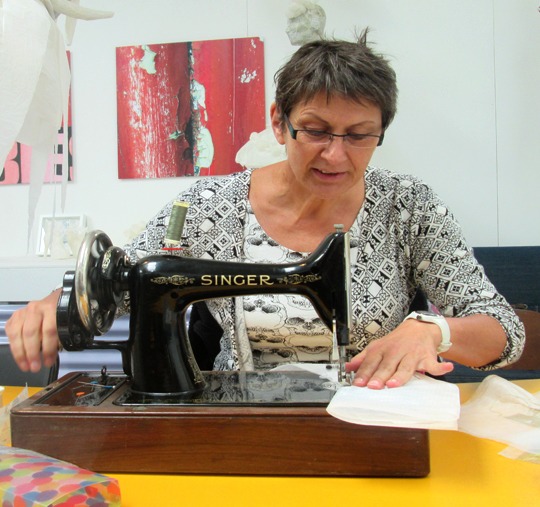
How do you go about choosing where to show your work?
I now mostly work to commission or select carefully which exhibitions I would like to take part in. The events have to be relevant to my interests in recycling and reusing of resources, the preserving of nature and have to allow for me to work with 100% sustainable material.
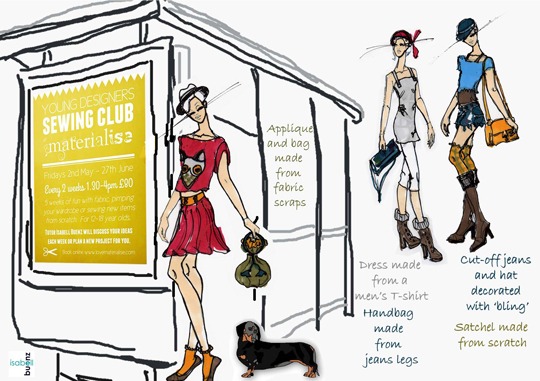
Where can readers see your work this year?
As I now only work to commission my work can be seen online on my website, my social media and my flickr pages. I also have items (’10 Symbols of Connemara’) on permanent display at the Pearse Cultural Centre Connemara in Ireland.
Other sources are:
Photograph of work: www.flickr.com/photos/isabellbuenz/sets
Twitter – @IsabellBuenz
Instagram – @isabellbuenz

For more information please visit: isabellbuenz.co.uk
If you’ve enjoyed this interview with Isabel then let us know by leaving a comment below
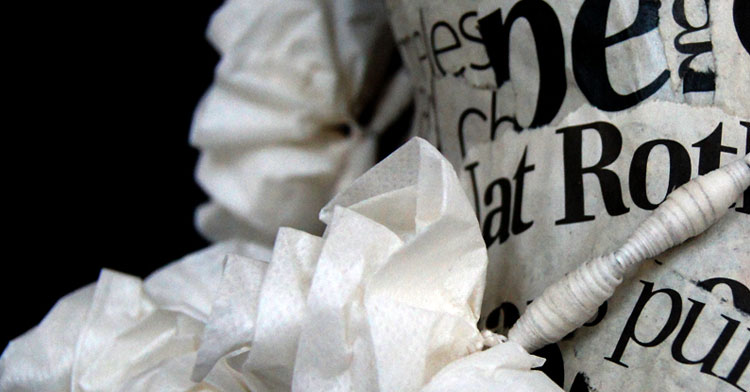
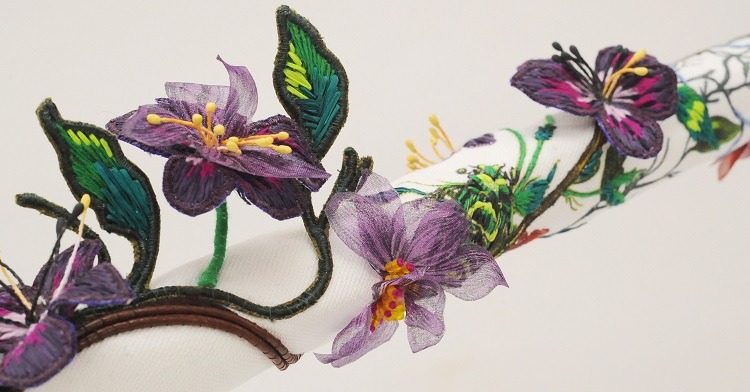

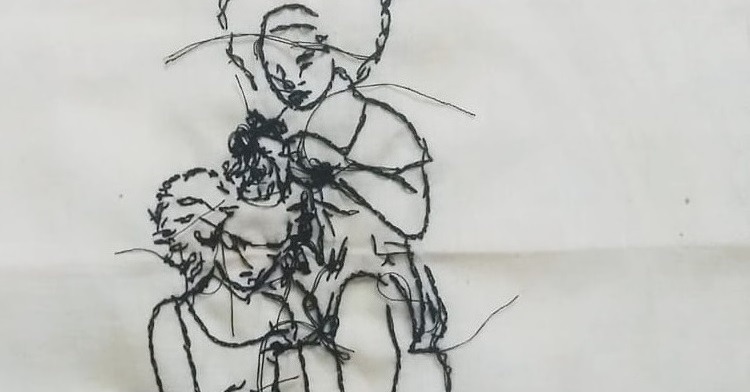
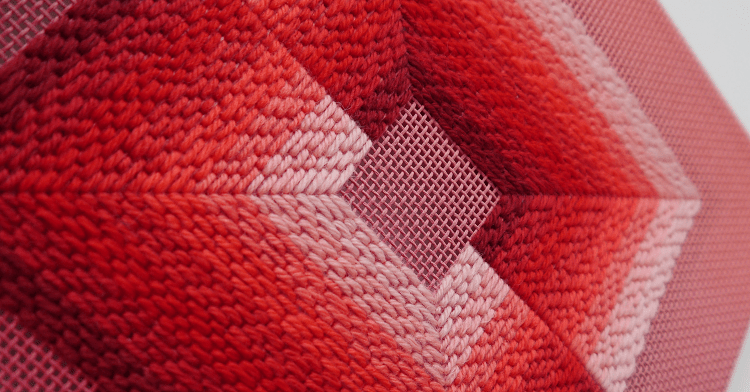
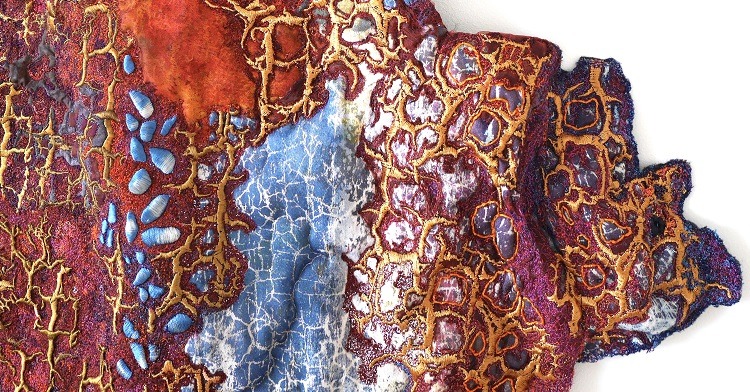
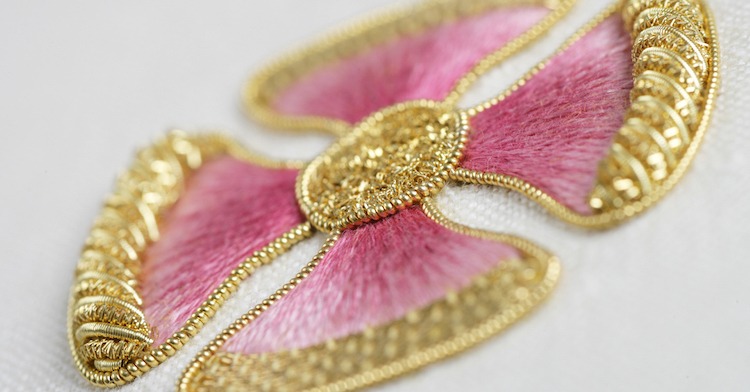
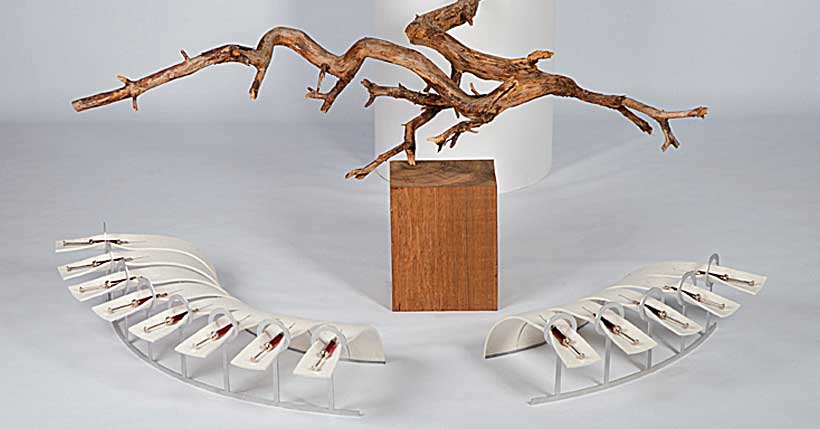
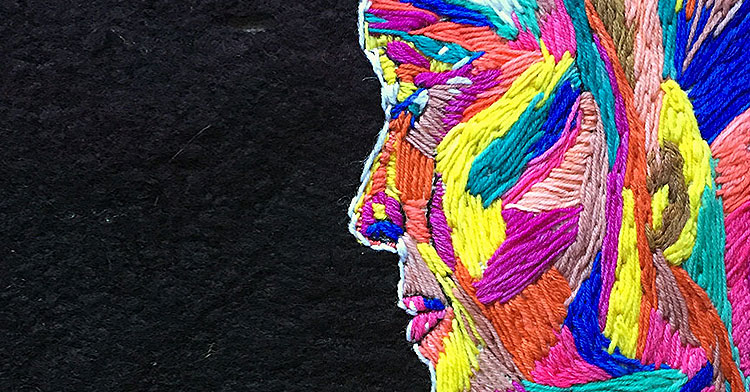
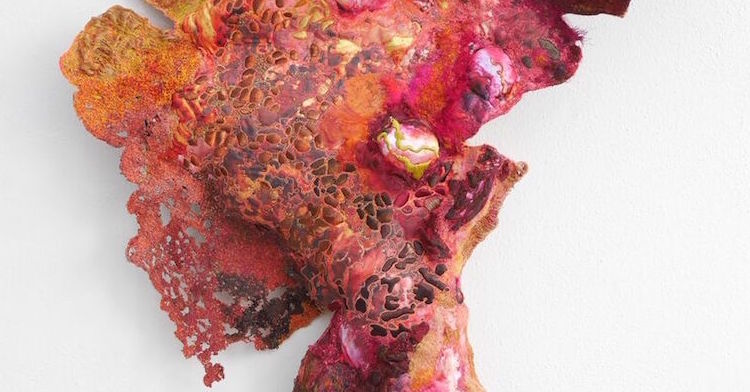
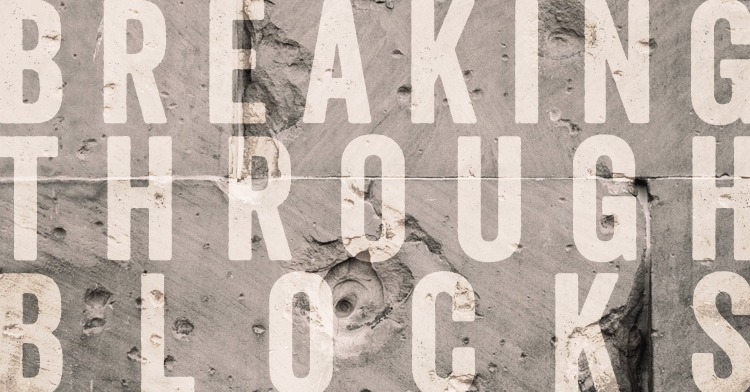
Comments